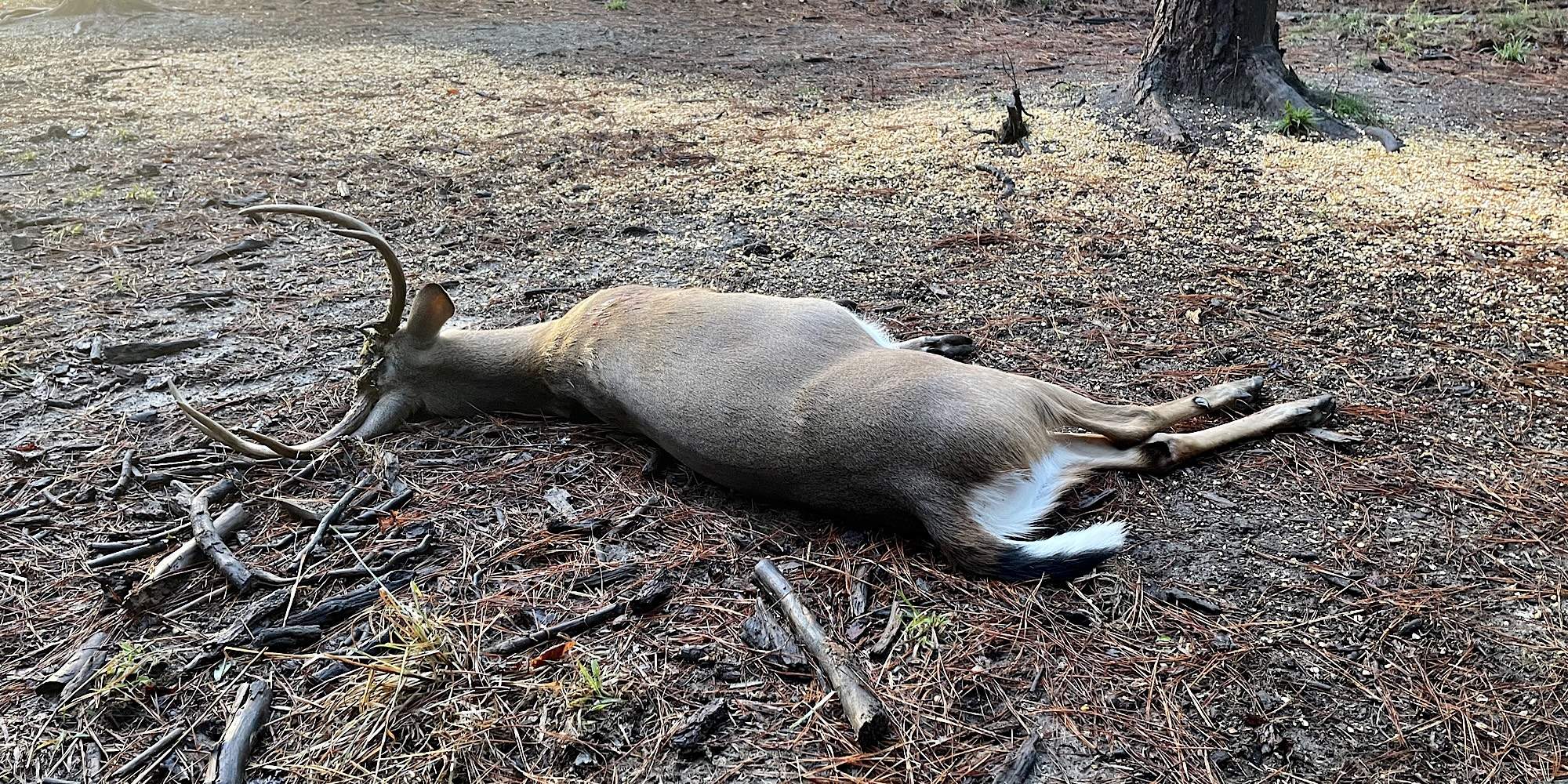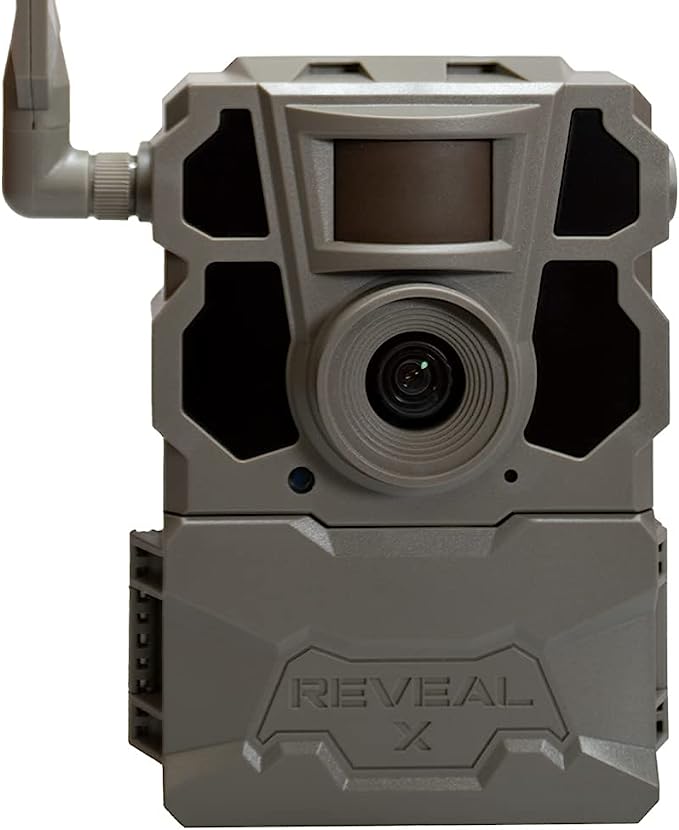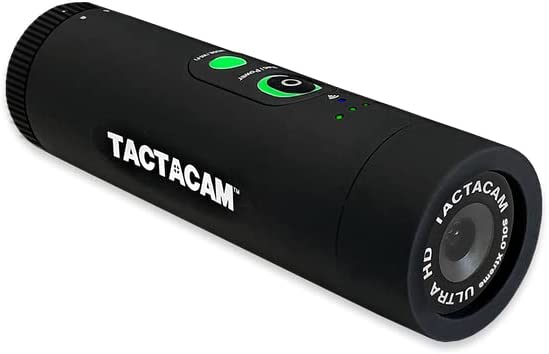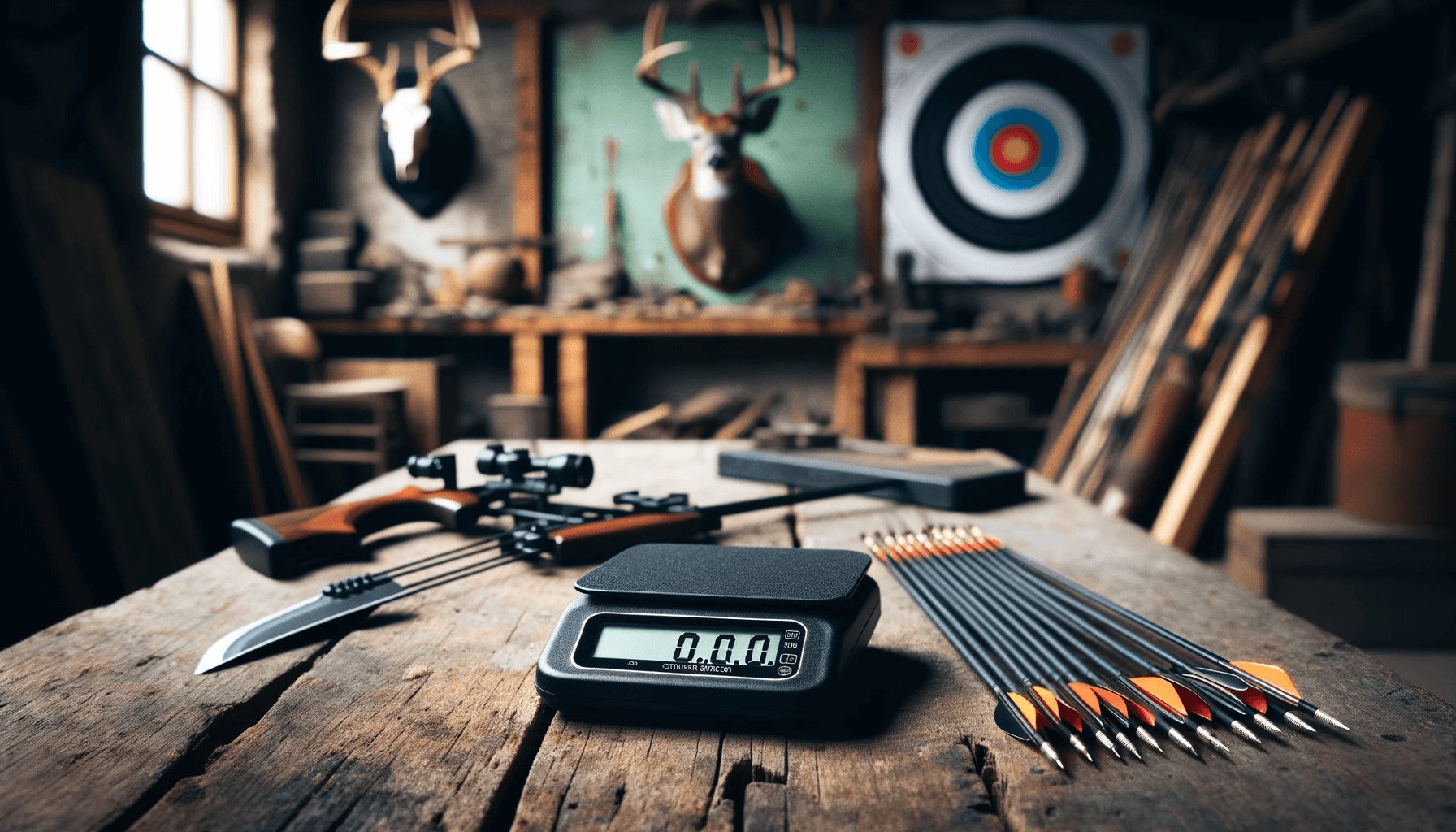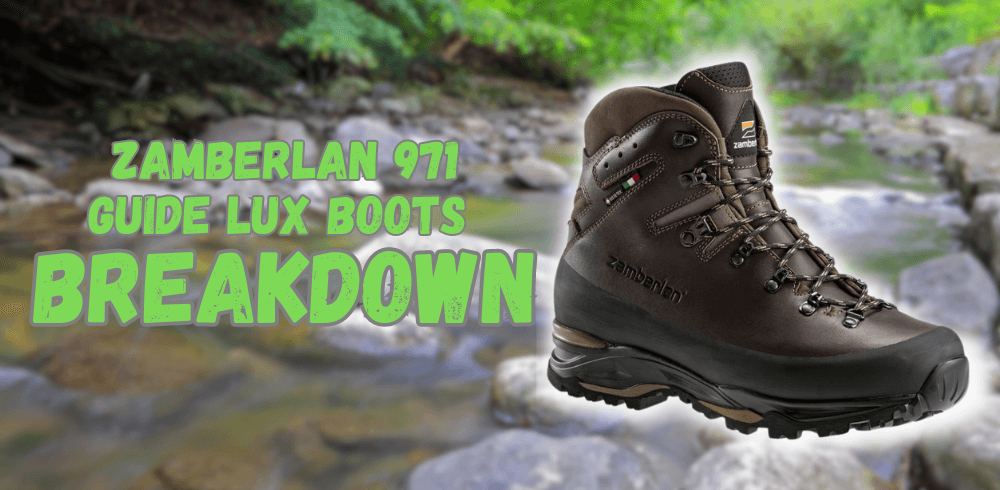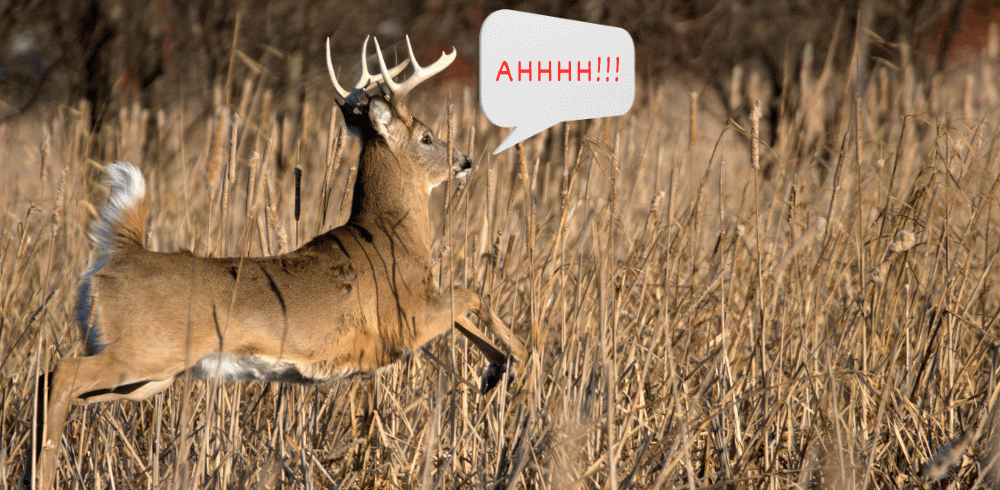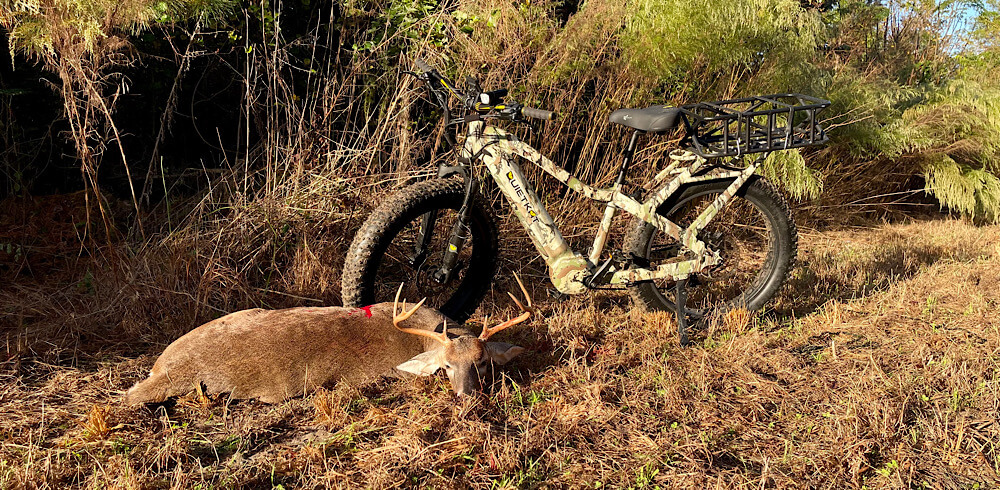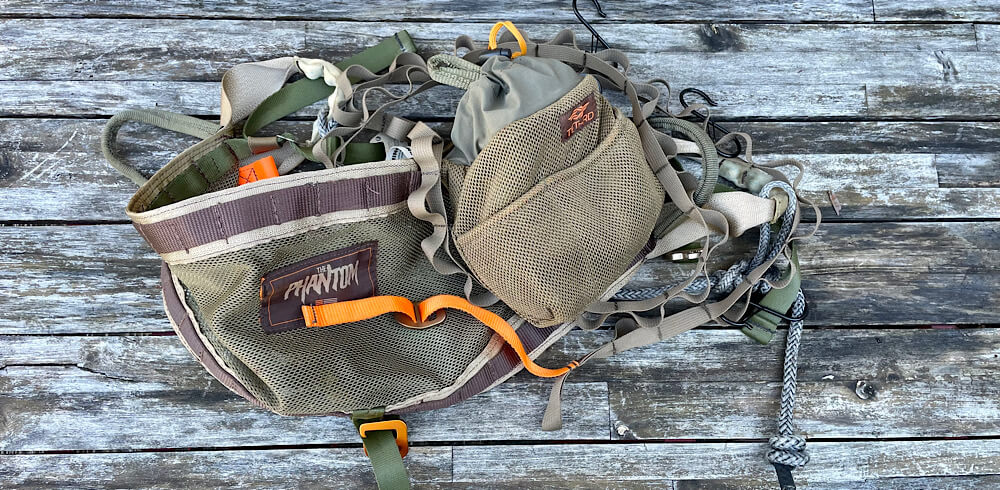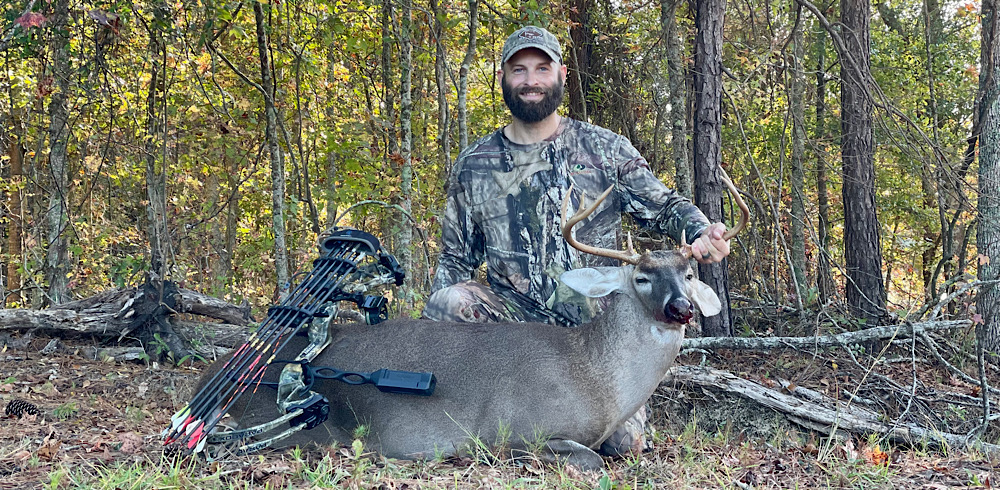Late season deer hunting can be one of the most challenging times to get a deer on the ground, especially a mature buck.
However, understanding late season deer behavior can help you put does, as well as bucks, on the ground.
Late Season Deer Hunting Strategy
The right late season deer hunting strategy is going to be dictated in part by how long after the post-rut you’re hunting.
Food is going to be the main focus for all deer during the late season, but if you’re hunting early in the late season, you may still notice a little bit of rutting activity.
The 2nd Rut
If you’re unfamiliar with the 2nd rut, I’ll give you a brief explanation. During peak rut, most does in your area are going into estrus.
For those does who aren’t bred during that period, they’ll go back into another estrus cycle 28 days later.
Also, some fawns that were born later in the Spring who didn’t go into estrus during peak rut will also go into estrus during this time as well.
This is why you may notice rutting activity ramp back up near the end of November and heading into early December, depending on your region.
If you’re hunting what you would consider the late season in your area, and you notice some rutting behavior (bucks fighting, pushing does, etc.), you may be experiencing a 2nd rut.
During this time, it’s not a bad idea to keep the calls you were using during the rut in your pack because mature bucks can still be seen cruising for those last estrus does to breed.
If, however, you’re not seeing any rutting activity, you’d be better off leaving the calls at home because you’ll end up doing more harm than good by calling. And this time of year can be hard to tag a deer of any caliber.
Food Is King
No matter if you experience a 2nd rut or not, food is absolutely the number one thing you should be focusing on.
Bucks work so hard and travel so many miles during the breeding season that they can lose up to 20% of their body weight.
Because of this, their number one priority becomes food. And because the bucks aren’t out there running the does to death, does are also able to get back to focusing solely on food to help replenish what they lost as well.
Also, they need nutrition to bulk up for Winter, as well as to grow the fawns they’re now carrying.
So, if you’re not hunting over food or between bedding and a major food source, you’ll be lucky to even spot a deer.
Late Season Deer Hunting The Mornings
Because food is the priority for late season deer hunting success, it’s going to be extremely difficult to hunt mornings.
Trying to sneak into a set without alerting feeding deer, even for rifle hunters, can be extremely challenging. Bowhunters can just about forget it.
Put out cell cams over food, and you’ll see that deer are going to feed heavily over night and into the early morning, so sneaking into 30 yards and climbing a tree would be impossible with deer present.
Late season deer hunting over or near food is going to require a dedication to evening hunts, unless you know exactly where those deer are going to funnel back to bed after feeding.
But because of the amount of hunting pressure those deer were under during the rut, and their already limited amount of daylight movement during this period, if you bump them now, you may not have another opportunity.
So, unless mornings are literally your only option, I’d stick strictly to evenings.
To Bait or Not to Bait

If it’s not legal to bait where you’ll be hunting, you can skip over this section. If it is legal, however, you have a decision to make here.
If you don’t typically like hunting over bait, you just need to decide how bad you want it.
If you’ve been struggling all season and haven’t filled one tag, you may be wide open to the idea.
If, however, you’ve tagged a couple, and will be happy not tagging another, then hunting over natural food sources and travel routes is a great way to challenge your skills until the season’s end.
For those who can, and plan to bait, it won’t help to just put out corn and hope for the best. You’ll need to go about it in the right way and hunt smart to get it done in daylight.
Late Season Deer Hunting Over Bait
If you’re going to put out a bait pile or a feeder, you still have to hunt smart. Playing the wind, as usual, is key.
Fortunately, if you’re putting out bait, you can set up your location for the prevailing wind in the area.
It’s also important this time of year to make sure you’re putting that bait out close to cover.
Because deer aren’t typically daylighting as much during this time of year, you’ll want them to feel safe enough to hit your bait during legal shooting light.
Within 50-100 yards of a cutover, just up the hill from a thick creek bottom or creek crossing – you get the idea.
If you’re unsure how close deer are bedding to that given area, play it a little safer and don’t get right on top of the thick stuff.
Setup Options For Baiting

When going in to set up, you want to get in and get out with as little impact as possible. If you bump deer as you close in, back out a little before putting out bait.
And try to avoid rubbing up against vegetation. They’re going to know you were there, but you want them to get over it and start hitting the bait as soon as possible, so you don’t want to blow them out of there with excess scent and trimming.
The best stand location would be one that requires zero or almost no trimming for shooting lanes.
Using a pair of shears to trim small limbs is fine, but anything that requires a hack saw is probably too much for this late in the game.
Also, make sure the wind won’t be blowing your scent where you suspect they’ll be traveling to or from. Take a wind checker or milkweed to verify on your walk in.
Once you’ve found the perfect spot, the quickest way to have deer daylighting over bait is to simply set out the bait with a cell camera for verification, and nothing else.
That means you’ll need to hang your set when you go back in to hunt. If you don’t think you’ll be able to do it quietly enough, go ahead and hang it when setting out the bait.
Setting out blinds for late season deer hunting can work, but it requires that you think through the location thoroughly.
You’ll also need to brush it in as much as possible to help it to blend in with the surroundings.
They’ll know it’s there either way, but their attention will consistently go back to it during hunts if it’s new and it sticks out like a sore thumb.
No matter your setup choice, once you see on your cell cam pics that deer – or a target buck – are daylighting, it’s time to go in if the wind is right.
How Often To Replenish Bait
If you’ve got cell cams out, you can keep an eye on the bait. If it looks like it’s almost gone, it’s time to go back in the middle of the day, preferably around lunch, to add more.
If you can’t use or don’t have access to cell cams, you’ll have to make an educated guess. High-deer-density areas may require that you add more after 1-2 weeks, depending on how much you started with.
Late Season Deer Hunting Without Bait

If it’s not legal, or you’re choosing not to bait, you still have options to get it done, but it’s going to require some knowledge of the land you’re hunting.
Knowing where deer are bedding is going to help you tremendously. If you know where they bed, but not where they feed, it may be time to go for broke and get in tight enough to their bedroom to see them get up in the evenings.
Also, if you are going to hunt the mornings, slipping in just off of their bedding 2 hours before daylight may give you the shot opportunity you’re looking for.
Also, any neighboring fields or farms that have any kind of soft crops growing may give you a clue as to where the deer on your property are traveling to in the evenings.
Sitting off of heavy trails between bedding and food is always a good idea.
And if all else fails, and you don’t know where they bed or where they’re feeding, it may be time to look for the thickest cover you can find because deer often retreat to that kind of environment following pressure from the rut.
Finish Strong
No matter what, just don’t give up. There’s only so much time left before the season’s over, and you can still get it done.
It’s just a matter of being smart about it. Remember, focus on food as your number one priority. Baiting, where legal, is an option.
Without bait, focus on natural foods and farm crops, bedding, and trails between the two.
Make a game plan and go for it. Good luck!

